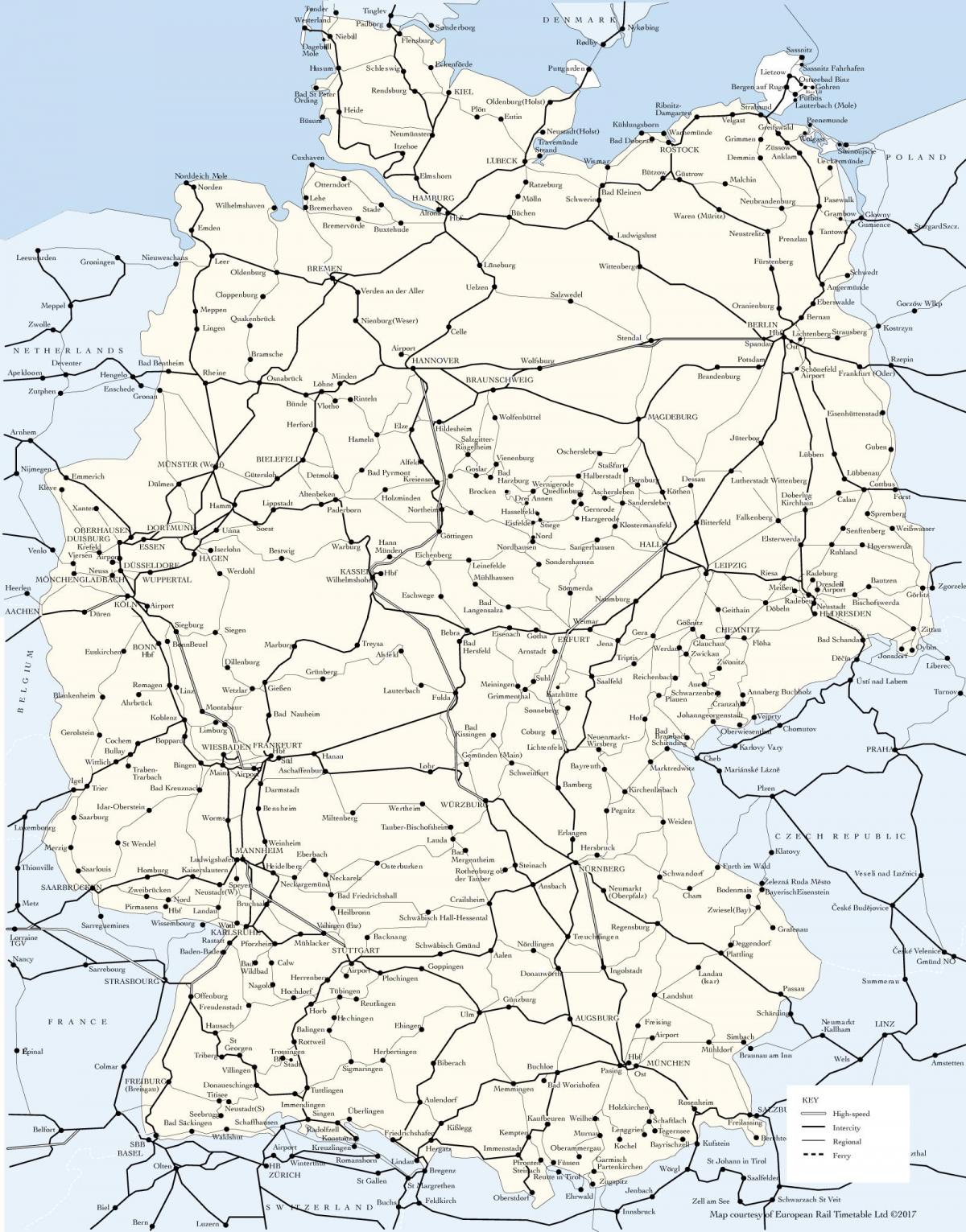search
Germany train map
Map of Germany train routes. Germany train map (Western Europe - Europe) to print. Germany train map (Western Europe - Europe) to download. In 2006, railways in Germany carried ca. 119,968,000 passengers in long-distance trains (at an average distance of 288 km), and 2,091,828,000 passengers in short-distance trains (21 km on average). In the same year they carried 346,118,000 tonnes of goods at an average distance of 309 km. The train types for regional and local traffic as its shown in Germany train map are: Regional-Express (medium-distance semi-fast trains for regional services), Regionalbahn (basic local service, usually calling at all stations), S-Bahn (suburban rail transport offered mainly by Deutsche Bahn, sometimes by others), U-Bahn (underground), Tram (light rail services, sometimes including underground passages in the city centers).
There are significant differences between the financing of long-distance and short-distance (or local) trains in Germany as its mentioned in Germany train map. While long-distance trains can be run by any railway company, the companies also receive no subsidies from the government. Local trains however are subsidised by the German states, which pay the operating companies to run these trains. This resulted in many private companies offering to run local train services as they can provide cheaper service than the state-owned Deutsche Bahn. Track construction is entirely and track maintenance partly government financed both for long and short range trains.
In some areas of Germany an urban railway called S-Bahn is in operation. These trains usually connect larger agglomerations to the suburban areas, although in the case of the Rhein-Ruhr S-Bahn these also serve as a method of interurban transport between large cities. High-speed trains, called ICE connect cities for passenger travel. The InterCityExpress or ICE is a type of high-speed train operated by Deutsche Bahn in Germany and large cities in neighbouring countries, such as Zurich, Vienna, Copenhagen, Paris, Amsterdam and Brussels as you can see in Germany train map. On regular lines, at least one train every two hours will call even in the smallest of villages.
The main train company that manages most of the rail traffic in the country is Deutsche Bahn (DB for short) – with them, you can get from major city to major city in no time at all, thanks to the amazing high-speed services on offer. Handily, the majority of trains in Germany operate under the banner of Deutsche Bahn, so your brain wont be too overloaded when looking for the right trains. DB trains can vary from the high-speed Intercity-Express (ICE) models to the slower (though not by much) Intercity and Regional-Express trains as its shown in Germany train map. Other trains in Germany include joint ventures for International routes like DB-SNCF – a collaboration between the main train companies in both France and Germany for oh-so-chic journeys between Paris and cities like Munich, Stuttgart and Frankfurt (and more) and vice versa.


